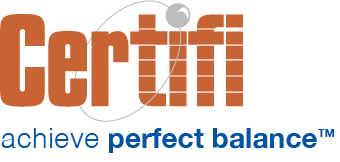In the summer of 2019, the Treasury Department, Department of Labor, and Department of Health and Human Services published a final rule in the Federal Register designed to “expand the flexibility and use of health reimbursement arrangements (HRAs) and other account-based group health plans.” This final rule created the concept of an individual coverage HRA, or ICHRA, which became available on January 1, 2020.
What’s an HRA?
Before we talk about ICHRAs, let’s discuss HRAs in general. Employers fund HRA accounts and employees use those funds to pay out-of-pocket health care expenses. Not to be confused with a health savings account (HSA), which are employee-funded and can continue to be used by the employee if they leave the company, an HRA is only funded by the employer and unused funds revert to the employer if the employee leaves.
What are ICHRA Plans?
The Obama administration restricted employers from reimbursing employees for premiums in health insurance exchanges. In 2016, a Republican Congress introduced the concept of a Qualified Small Employer HRA (QSEHRA) in the 21st Century Cures Act, which President Obama signed. The act allowed employers with less than 50 employees that lacked group health insurance benefits to provide tax-free reimbursement accounts for insurance premiums paid in the individual market. You can learn more about QSEHRAs here: https://cdn.ymaws.com/ecfc.org/resource/resmgr/docs/Govt_Docs_/2017/IRS_Notices/n-17-67.pdf
An ICHRA essentially takes the QSEHRA concept — enabling employers to provide a tax-free reimbursement account for employee health expenses, including insurance premiums — and expands it to employers of any size. There are other differences, but ICHRAs essentially enable employers to contribute funds tax-free to an account. Employees can use that account to pay for their health insurance premiums and other medical expenses.
What’s the Fine Print?
There are some important caveats when considering an ICHRA plan:
Employers can offer an employee an ICHRA or a group health plan, but not both.
Employees must be enrolled in an individual health plan to qualify for an ICHRA. Employees can purchase a plan in a state or federal exchange or directly from an insurer off-exchange.
Employers do not need to offer ICHRAs to all employees.
Because ICHRA’s don’t allow employees the option of choosing between a group health plan and an ICHRA, large employers want the flexibility to offer some employees ICHRAs and some employees traditional group health insurance. ICHRAs offer that flexibility by enabling employers to create classes of employees. For example, full-time employees vs. part-time employees, salaried vs. hourly, etc. Creating classes enables employers to offer an ICHRA to one class of employees and a group health plan to others, as long as those actions aren’t considered discriminatory.
There are no contribution limits.
Unlike a QSEHRA, ICHRA plans don’t limit the amount an employer can contribute to an employee’s account. However, employers must treat all employees within a specified class equally. The only exception is for older employees and those with more dependents.
Employees may lose subsidies in the individual exchange market.
If your employee obtains insurance through a state or federal exchange, your contribution could affect their ability to get a subsidy. If an employer’s ICHRA offer is considered “affordable”, the employee isn’t eligible for a subsidy. Affordability takes into consideration the cost of the lowest-priced Silver-tier plan in the employee’s location (see this health insurance exchange terminology guide for an explanation of metal tiers), their household income, and the amount reimbursed by the ICHRA plan.
There are employee notification requirements.
Employers need to notify employees as soon as they are eligible and 90 days before the plan year start. The notice must include specific information so employees can complete their insurance application and verify their eligibility for subsidies. You can find a sample HRA notice at https://www.cms.gov/files/document/hra-model-noticepdf.
What are the benefits of an ICHRA?
Employer Cost Containment. Employers can more easily budget their health insurance expenses because they’re defining the contribution amount. There’s also less overhead — employers don’t need to manage and monitor renewals, participation rates, employee-favored networks, etc. Instead, they set their monthly allowance and communicate according to the notification requirements.
Potentially More Employee Choice. Depending on the market, employees may have more plans to choose from in the individual market. As a result, they can choose a plan more suited to their individual health care needs. That does come with a caveat, however: Premiums in the individual market are generally higher than those in the group market.
Employees can take their plans with them. With employees changing jobs more frequently today than in the past, ICHRAs enable them to take their individual plans with them if they leave their employer.
Certifi’s William is automated premium billing and payment software that streamlines benefits billing and payment solutions for employers.



